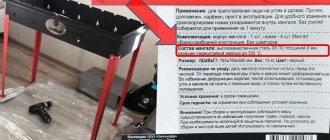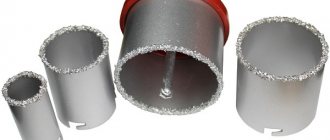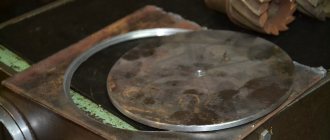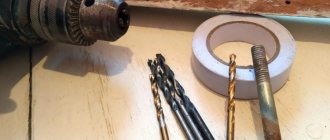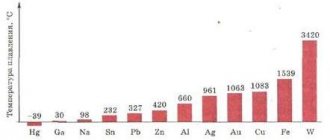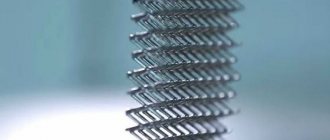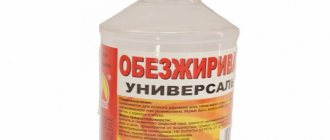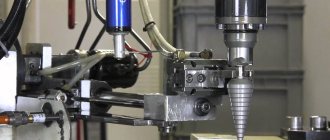Turning of a conical surface, the generatrix of which has a length exceeding 15 mm, is often accompanied by the appearance of vibrations. This leads to the appearance of waviness on the treated surface. Vibrations increase with increasing length and decreasing diameter of the part.
The surface of the workpiece may become wavy if the cutter overhang is large or if its fixation is unsatisfactory. True, vibration does not occur in all cases (for example, a rigid part with a generatrix of short length and a large slope angle is being processed). In such situations, there is a high probability of tool displacement due to the cutting forces acting on it in the absence of proper support or an excessively large overhang. In both cases, the angle of inclination will be different from the required one.
Due to the short length of the cutting edge, the cutter is quite difficult to install on the machine. Lack of straightness of the tool blade leads to deviations of the hole from the desired shape. It should be noted that the cutter must be installed at the level of the centers of the machine.
Machining holes in the form of cones with an installed tool is feasible if:
- the length of the cone generatrix is a maximum of 15 mm;
- the workpiece is highly rigid;
- the cone to be ground is located close to the fixed part of the product;
- the cone has a large angle of inclination;
- the workpiece is not subject to increased requirements regarding accuracy, straightness and quality of machining of the hole.
To check the slope of a cone made with a cutter, you can use a special template.
Step (conical) drill for metal - types, purpose and characteristics
A cone drill is a cone-shaped drill with one or more longitudinal straight or spiral flutes that form the cutting edge of the tool. Thanks to the variable diameter of the drill, it can be used to produce holes of different sizes in the workpieces.
It should be noted that cone drills come in two main types, which are often confused with each other: directly conical drill and stepped drill.
Conical drills are characterized by a smooth transition of diameter from smaller to larger. With their help, you can drill a hole in metal with a diameter ranging from the minimum to maximum diameter of the tool itself.
Step drills are distinguished by a sequential stepwise transition of diameters. When using this type of cutting tool, it is much easier to control the size of the hole being machined, and its diameter will strictly correspond to one of the diameters of the sequential row of drills.
Specifics of cone deployment
Conical holes that differ in normalized dimensions must be processed with reamers. A set of these tools is presented in Figure 1. It includes three items of a specific type and geometric parameters corresponding to the hole being processed.
Figure 1. Conical reamer: a – for roughing work; b – for grinding the removed chips; c – for finishing work
Each reamer shown in Figure 1 has a conical cutting part, the dimensions of which are selected according to the hole, and a cylinder-shaped shank. The design of the conical part provides for the presence of special grooves that form teeth.
The roughing reamer (Figure 1, a) has a small number of teeth. All of them are arranged in steps along a helical line. The tool presented in Figure 1, b has much more teeth, which, just like in the first option, are arranged in steps. A characteristic feature of the finishing reamer (Figure 1, c) are straight teeth.
Before using reamers, care must be taken to drill the hole. To do this, select a drill whose diameter is about half a millimeter smaller than the diameter of the roughing reamer. After drilling the hole, you can begin to unroll it, as a result of which the treated surface becomes not only conical, but also stepped. Processing with the second tool from the set helps to reduce steps and increase their number. When using the third sweep, the existing steps are smoothed out.
A kit used to machine slightly tapered holes may consist of just a couple of tools. Sloping cones can be processed with a finishing reamer.
The easiest way to check the parameters of the resulting holes is with a plug gauge, shown in Figure 2.
Figure 2. Test plug gauge: a - appearance; b - diagram of the use of the tool; A and B - marks indicating the maximum tolerances of the cone angle
Using the gauge presented above, you can make special marks on its side surface using chalk/pencil. When inserting this device into the hole, you need to turn it several times. Completely erased marks will indicate that the hole taper angle is correct. In the case where the marks are erased only at the smaller diameter of the plug gauge, the cone angle is made larger than necessary. Accordingly, a too small cone angle can be judged by the lines erased only at the large diameter of the control tool.
Figure 2, b shows a check of a correctly processed cone, since mark B is covered by the part, but mark A is not. If the end of the product did not overlap the mark B, then the hole can be processed again. If the end of the product overlaps mark A, then the part is considered defective. Instead of marks, special ledges may be provided on the tool, corresponding to the pass/no pass size.
Application area
Conical metal drills are used to make holes in sheet and thin-walled metal. Typically, the thickness of the metal being processed is from 1 to 4 millimeters and depends on the height of the drill step. If the height of the step is 4 millimeters, then the maximum thickness of the sheet or rolled metal that can be processed will be, respectively, 4 millimeters. A step drill allows you to work even with thin sheet metal.
The main difference from other types is that with the help of one drill you can get several standard sizes of holes at once.
Note that there are also conical drills for processing not only metal, but also wood, plastic, drywall, and textolite.
A conical drill (sometimes craftsmen call it a carrot drill) is also distinguished by the fact that when used correctly, the hole has virtually no defects. Proper use of the tool allows you to obtain smooth walls and edges of the hole, the absence of burrs and cracks. After drilling, there is no need for additional hole processing. Therefore, craftsmen often use them to correct defects in holes made with another type of drilling tool.
A high-quality metal cone drill bit has hard, sharp edges, which allows it to work with metal of high density and hardness. Some drills also have an abrasive coating, which further increases their effectiveness. Where another tool is powerless, it is often very convenient to use this type of drill.
The cone drill has a sharp tip, which allows the drilling operation to be carried out without preliminary core punching and additional centering.
Foam concrete
For durable foam concrete grades above M800, the same methods and tools are used as for concrete or brick. For lightweight foam concrete used to insulate walls below M600, it is sufficient to use methods and tools as for wood, only preference is given to cutting tools with a titanium-based protective coating.
In the process of construction and repair, drills are one of the main consumables. Depending on the type of work being carried out and the surfaces being processed, craftsmen select the appropriate types of drills.
There are quite a lot of classification criteria by which drills are divided. Manufacturers today offer a wide range of products, differing in shape, material, and specific use.
Shape and dimensions
All cone drills for metal, as already mentioned, have a cone shape and can have a smooth or stepped diameter transition. The most widespread among mechanics is the step metal drill.
This is due to the fact that it is easier for them to work, since the transition from size to size when drilling is clearly visible, and achieving the desired diameter will not be difficult. The resulting hole has a fairly high surface quality and does not require additional finishing. And a fairly smooth transition from one step to another forms a chamfer for a pre-drilled hole.
Step drills differ in the number of steps, their height, diameter range and pitch. Typically, the diameter of the smallest drill step is 4 millimeters. The maximum size of the hole that a stepped tool can drill is up to 40 millimeters. The standard step height is 4 millimeters. This value determines what thickness of metal the tool can process.
The successive increase in diameter can be 2 or 3 millimeters. The standard step is 2 millimeters. Typically, if a cone drill has a wide range of diameter sizes (for example, from 4 to 40), then the step in this case can be 3 or 4 millimeters.
In specialized stores you can find step drills with a different range of diameters, so they should be selected for a specific set of tasks.
In addition to the working part of the drill, the tool also differs in the shape and size of the shank. The shank can have a cylindrical shape of various diameters, a hexagonal or triangular shape, as well as a specialized profile for specific connectors from hand tool manufacturers. A step drill for metal can be installed on a screwdriver, hammer drill or drilling machine.
Criterias of choice
| Manufacturer | Popular manufacturers include: matrix, BARS, BISON, Enkor, Vira, STAYER, |
| Drill type | Two types (picture above) - with a spiral and a straight groove. With a straight groove - they have a simple geometric shape and are easier to sharpen. With a spiral blade - good smoothness, high cutting performance and better chip removal. |
| Number of steps | There are small drills with 3-6 stages, as well as multi-stage ones with 10 levels, which makes it possible to make 10 different holes in diameter. |
| Drilling diameter | It can vary from 4 to 12, from 6 to 30, from 4 to 40 mm, it all depends on the number of steps and the size of the working part. |
| Working part length, mm | 57, 70, 76,, 81, 100, 105, 115 mm. Step 1, 2, 3 mm |
| Shank type | By type of shanks they can be divided into: hexagonal, cylindrical, triangular, canonical. |
| Shank diameter, mm | Ranges from 6 to 12 mm |
| Drill material | HSS (High Speed Steel) - high-speed steel drills, made from 3 types of steel: Tungsten (T1–T15), Molybdenum (M1–M36), High-alloy (M41–M62). HSS-G - the cutting edge is treated with cubic boron nitride, which extends the life of the drill. HSS-G TiN - containing titanium nitride. HSS-E - contains cobalt and other high-strength metals |
Marking features
Step drills for metal may not always be marked. You should not look for markings on cheap Chinese tools or domestic drills of dubious manufacture. Such manufacturers can sometimes put on drills or their packaging only symbols that they understand, which do not characterize the tool in any way, but serve only for internal classification. But a high-quality professional tool from a trustworthy manufacturer always has a marking.
In the standard case, proper marking should contain in its designation all the main dimensions of the tool, material of manufacture, as well as characteristics of hardness or strength.
Let's take an example of the marking designation ø4-20/2 HSS4241-Co HRC 62.
This cone drill marking should be read as follows:
But most often, instead of marking, the manufacturer indicates on the packaging the main characteristics of a cone drill for metal. Moreover, the description of the characteristics is often accompanied by explanatory images to facilitate consumer understanding.
How to choose the right step drill?
To choose the right step drill, you need to decide on the purposes for which the tool will be used. Thus, it is necessary to determine what size holes need to be drilled. The values of the smallest and largest diameters that are planned to be made are especially important.
You should also decide on what hand tool or machine the drill will be used. The type of shank that should be on the drill depends on this. Therefore, you should carefully study the drill chuck connector and clearly know the shape and dimensions of the shank. If the shank does not fit the existing connectors, you will have to separately purchase a special adapter.
It is important to decide on the manufacturer and level of the tool. As already noted, bright golden-colored stepped conical drills are made with cobalt and titanium impurities, with an abrasive coating and have high hardness. They will last longer and allow you to work with thick rolled products, stainless and alloy steels.
Look for the HSS designation on the label or packaging, which means the drill is made of high-speed steel. Try not to buy dubious Chinese-made drills.
Cone drills are expensive, but at the same time quite reliable and durable cutting tools.
But in any case, after some time, their cutting edges become dull, and the tool loses its characteristics. Some step cone drills are designed to be sharpened, and some are not sharpened. Those that are not intended for sharpening are characterized by high quality cutting edges and durability. Source
How to make a tapered hole in solid metal?
Most often, to obtain a cone in a product without a previously prepared hole, it must first be drilled. Moreover, the diameter of the drill chosen for this purpose must be less than the minimum diameter of the cone by at least a couple of millimeters. If the cone has a large slope, the hole will have to be drilled with ledges.
Preliminary machining of large cones on equipment is carried out as follows: first, take a drill of the largest diameter, which makes a shallow hole, then you should move to a drill with a smaller diameter and make the next ledge with it, and so on, until it reaches the smallest diameter.
When boring a hole, it is recommended to choose a cutter whose clearance angle should take into account the minimum diameter of the hole. It often happens that at the beginning of processing the selected tool copes with its functions perfectly, but at the end of the work the selected cutter angle may not be large enough. This results in friction between the hole surface and the tool, which is unacceptable.
Which step drills for metal are best to choose?
To make a high-quality hole in metal, you need to select a drill that will cope with this task.
If you need to perform high-precision work in sheet material up to 4 mm thick, then a step drill for metal will be most suitable for this. Such cutting products not only have increased accuracy, but also require the correct approach to the drilling operation.
To process the material correctly, you need to know some of the nuances of selecting and using such a tool. All the intricacies of metal processing using cone drills will be discussed in detail below.
Advantages of cone drills
Stepped products have the following positive properties:
A step drill allows you not only to perform high-quality drilling of metals, but also to correct hole defects that were made with other types of products. For example, if the center of the hole is displaced when using spiral analogues, a conical one can completely correct the defect.
It is also possible to expand the holes if necessary to a fixed diameter. Despite the higher cost of cone drills, significant savings can be achieved with frequent use. Due to the absence of the need to purchase a large number of tools of different diameters.
A cone drill allows you to chamfer during drilling and therefore does not require additional time, which saves time during large volumes of work.
How to choose a cone drill
An indirect sign of a quality product will be its price. In addition, by the color of the metal it will be possible to tell from the material and what strength the gimlet is made of.
Stepped products can be divided by color into several quality groups:
In addition to the quality of the material, the final cost will be influenced by the diameter of the purchased tool.
Cone drills from domestic manufacturers are always cheaper, but if it is possible to purchase an imported tool, then you should do so. Despite the higher cost of imported products, the resource of manufacturers such as Bosch, AEG, Irwin will be noticeably higher, but only when purchasing original products.
What are the best step drills for metal can be determined by reviews on the Internet. You can get high-quality information on specialized forums where specialists who use cone products in their daily work communicate.
Tool sharpening
To sharpen a cone gimlet, you must perform the following steps:
This way you can restore the functionality of the cone tool yourself.
If you have the opportunity to contact specialists, you can get a complete restoration of the gimlet for little money.
How to drill
With a well-sharpened tool, it is easy to make high-precision holes in a metal sheet up to 4 mm thick.
To perform drilling correctly, it is advisable to follow the recommendations:
If the requirements are met, the cone product will last a long time, without sharpening.
Advantages and disadvantages
The advantages include:
- have a long working life (due to the increased strength of the cutting surface);
- carrying out several operations simultaneously, that is, the versatility of the tool (drilling, chamfering, cutting, grinding);
- high speed of drilling holes without reducing the quality of hole edges;
- high accuracy of the drilling operation (a slight decrease is observed only in holes exceeding 15 mm);
- obtaining an almost perfectly smooth edge;
- the possibility of obtaining a so-called triangular hole;
- completely eliminates the need to use a centering tool at the preparatory stage;
- the ability to drill holes in very hard materials without compromising quality.
Variety of step drills
Of the inherent disadvantages, the most serious is the high cost of the tool.
Manufacturers of step drills
Products made in China are of low quality (there are exceptions). To buy a good cone drill, you should pay attention to tools made in Europe and Russia.
1. “Zubr” - stepped drills from a domestic manufacturer are of reasonable cost. The quality is at a fairly high level.
Cone drills can be made from ordinary tool steel or coated with more wear-resistant alloys. In the latter case, the price will be significantly higher, but the quality of the cutting surface will remain sharp longer even when performing a large volume of work.
2. “Attack” - Russian-made conical drills, which in quality and cost are not inferior to the best products from foreign companies.
Reviews about the products of this company are only positive, so you don’t have to worry about the quality, and in order not to overpay, you should select a tool taking into account the maximum diameter that will be needed in the work.
3. “Bosch” - the products of this German company are excellent for professionals and for working with metal at home.
The diameters on the tool are marked using a laser system, so in case of long-term use, the inscriptions are not erased. To increase the drilling speed, the top of the Bosch step drill is sharpened crosswise, and the workpiece is ground in both the transverse and radial directions.
Such processing of the tool allows, when using it, to obtain a high-quality hole, the diameter of which will fully correspond to the stage of the product.
4. “Falon-Tech” - drills from a German company have an additional titanium coating, which allows you to increase the tool life by more than 2 times.
The product has a laser marked diameter and a standard shank that is ideal for use with a screwdriver or hand drill.
Despite the increased quality of the product, its cost remains low. If you need to purchase a cone drill for home use, then the choice of products from this company is the most optimal.
All of these cutting tools do an excellent job of drilling metal up to 4 mm thick. If you need to work with thicker metal, it is recommended to use core drills.
Conclusion
We figured out what a cone drill is needed for. A properly selected product will last for many years. When working with metal of small thickness, to obtain high-quality holes, the use of drills of this design is the optimal solution.
Source
Instrument care
Industrial plants use various types of cone drills. The consumer can choose the necessary tool for working with different materials:
- when processing materials with high strength;
- drilling of alloys of different metals;
- processing of plywood, wood and plastic products.
After finishing using the tool, it must be cleaned of dirt and residues of the material being processed, and then lubricated with a special product.
Self-sharpening
When sharpening the drill used, you must follow the instructions and also have initial skills. To restore the cutting surface of straight grooves, it is recommended to use diamond grinding stones. Spiral edges are sharpened using high spindle speed machines.
Restoration occurs faster for products with high quality workmanship; it is recommended to use machines with a wheel made of abrasive material and sandpaper.
The use of such a tool will facilitate the work and also satisfy the consumer with a high-quality hole.
Cone drills
The shape of the working part of such drills is a conical series of step-by-step annular transitions and a longitudinal-spiral or simply longitudinal groove, forming sharp cutting edges.
This makes it possible to use one tool to produce holes of different diameters. Thus, we save not only time on replacing drills during work, but also money on their assortment. Progressive changes in size are made with smooth transitions between steps. This surface shape promotes easy rotation and increased processing efficiency of sheet materials. The use of high-strength steels for the manufacture of cutting edges on step drills provides them with longer service life without sharpening.
An example of a cone drill
The tool allows you to perform technological operations at a time, which under normal conditions require the sequential use of several tools. The material can be processed at high speed, guaranteeing excellent edge quality, even with the smallest sheet thickness. This form of arrangement of cutting edges makes it possible to drill not only sheet steel, but also soft non-ferrous alloys, wood, plastics, gypsum and other products.
The sharp tip eliminates the need for pre-punching and ensures precise positioning of the tool during operation. Step drills can be installed on stationary machines, portable hand drills, and with adapters, even on a hammer drill and grinder.
Conclusion . Considering the design features and technical capabilities of drills, we can say that the main purpose of this tool is to drill holes in thin sheet workpieces. In addition, they are used to correct defects formed after the use of traditional drills in the form of burrs, misalignment, triangular holes and others. Therefore, such drills are widely used in car repair, plumbing installation, electrical panel manufacturing, construction and finishing work.
Where are cone drills used?
Cone drills are used for drilling holes of different diameters in thin sheet materials. Moreover, the resulting holes are distinguished by such advantages as evenness and accuracy without scoring, chips or burrs. You can drill through thin-sheet material with a regular cylindrical drill, but the quality of the work will suffer and the task will also become more complicated. For example, the slightest deviation of the drill from the surface will result in a triangular or oval hole rather than a round one. In addition, burrs, scuffs and chips are formed, which ultimately negatively affects the quality of the work performed.
Read also: Rotary hammer device and principle of operation
The use of conical drills can significantly simplify the work, eliminating all the disadvantages of cylindrical devices. Due to its advantages, the equipment has found its application in various fields:
- Automotive and repair
- Landscape design
- Construction
- Installation of plumbing equipment
- Installation of electrical installations
The device is not effective in situations where you have to drill holes in materials whose thickness is more than 10 mm.
Types of Step Drills Available for Sale
For the manufacture of cone tools, high-speed steel HSS (High Speed Steel) is used. The types of additional processing of the material and surface can be judged by the color of the metal :
A thin layer of abrasive material made from artificial diamonds or titanium alloys can be applied to the surface of the drill. Such processing does not contradict the requirements of the standards and significantly increases wear resistance.
Step drill in action, video
Existing shapes and sizes
There are three forms of cones : a regular stepped one, in the form of a truncated figure without a guide point, and a figure made up of two conical parts with different angles of inclination of the surface.
Shanks for mounting in the chuck can be cylindrical, triangular or hexagonal. The last two types eliminate rotation, but create the risk of injury when the drill jams in the material being processed. However, with sheet thickness up to 4 mm this usually does not happen.
When choosing a tool, you need to pay attention to the size of the starting and finishing diameters. The first size starts from 4 mm or 7/8”, the latter maximum can reach 38 mm. The successive step steps up to 12 mm are every 1 mm, and after that every 2 mm. The usual step height is 5 mm, but can be found at 3, 4 and 6 mm. The value of this size determines the maximum permissible thickness of the material intended for processing.
Number and shape of working grooves
The number of cutting edges is determined by the number of grooves (not to be confused with steps), which can be from one to three. The shape of the grooves is longitudinal straight or spiral. Experts say that the spiral shape increases the service life of the tool, but makes the sharpening process very difficult. Step drills with three flutes are designed to work at high speeds, and with one recess the processing speed must be reduced.
The quality of metal processing at low speeds also depends on the number of grooves.
Stepper drill markings
A high-quality branded tool is always marked with an alphanumeric designation, which indicates:
For example, the inscription Ǿ 4-24/2 HSS-Co 72 says that the first diameter is 4 mm, the last 24 mm, the sequential step of sizes is 2 mm (4, 6, 8 ... 20, 22, 24 mm), made of high-speed steel with the addition of cobalt, Rockwell hardness 56 mm.
In addition, the marking may additionally contain data on the accuracy class and the manufacturer's trademark.
Pros and cons of using step drills
| Advantages | Flaws |
| replacing several drills with one universal drill with different diameters | high price |
| high quality drilled holes | complex sharpening technology |
| possibility of processing thin sheet materials | a cone drill has a conditional accuracy of hole diameter |
| drilling at high drive speeds | |
| reliability and durability | |
| short length, creating more comfortable working conditions | |
| savings on purchasing a complete set of drills |
The most famous manufacturers and prices
A brand very often speaks not only about the quality of products, but also seriously affects their cost. Well-known Western manufacturers guarantee the reliability of their products, but the price of their drills is much higher than domestically produced tools.
Cheap doesn't mean bad ! Among the popular Russian brands producing high-quality stepped cones, the trademarks “Ataka” (ATAKA) and “ZUBR” should be noted. Among the Ukrainian products, Globus conical drills are in demand. The manufacturing level of this instrument is not much different from its European counterparts, but the price can be 2-3 times lower.
The most famous European manufacturers of cone drilling tools are the following brands:
*I would like to point out that the figures may have changed since the publication of the article, so they are given for comparison purposes only.
For a more complete review of popular manufacturers, see here .
The same should be called the American brand MILWAUKEE and the Japanese Yato. You can hear only good reviews about their products, and if not for the high cost, then drills from these brands can be universally recommended for wide use.
Chinese products are distinguished by high manufacturing precision, but the quality of metals leaves much to be desired. Tools from the Middle Kingdom are most often short-lived, quickly dull and wear out; you can find a full range of tools on the most popular website for such products, aliexpress.
Video review of a tool purchased on this site
How to make the right choice
The purchase of a step drill should be based on an accurate formulation of the technological problems that must be solved when using it. Therefore, when choosing, take into account :
As already mentioned, the brand also determines the quality, but in this matter you need to independently choose the best option for the ratio of price and reliability of the tool. See a review of popular manufacturers here .
When purchasing tapered step drills, you will be drawn to a very wide range of prices. For example, products made in Russia and Ukraine with a final diameter of up to 20 mm cost an average of 400-500 rubles per piece, and with a final size of 30 mm or more they are sold 2-2.5 times more expensive.
Tools from well-known foreign brands up to 20 mm are sold for no less than 3,000 rubles, and with a finishing diameter of 30 mm for 5,000-7,000 rubles. Therefore, many buyers prefer to buy two or three drills from a domestic manufacturer rather than pay for one foreign product.
Drilling metal
A special feature of the drills is the presence of a sharp edge, which allows for mechanical processing of the material. They have an equal diameter along the entire length, and the blade is sharpened at an angle of 118°. The sharpening angle varies depending on the hardness of the material, for example, for alloy steel, it is 135°. This type of drill is made of HSS steel with 5% cobalt. During operation, they require cooling with special drilling oil .
In order to drill a nozzle in metal evenly and accurately, it is necessary to use a guide device - a jig.
When drilling, it is best to use as little force as possible. When drilling a through hole, when the moment of exit of the cutting tool approaches, it is necessary to reduce the feed so that the part does not tear out, the drill does not break, or burrs do not form.
A conical drill is used to produce a conical hole in metal. It is used as an independent tool. They can drill a cylindrical hole, turning it into a conical one. A conical hole in the metal is made on a lathe in order to drill and bore the resulting nozzle with a cutter.
Cutting modes
The most common mistake is using too high a drilling speed . The more difficult the material to process, the lower the drilling speed should be used. For example, in the case of drilling an 8 mm hole in brass, the drilling speed should be 2500 rpm, for harder alloy steel - 800 rpm. The best sign that the drilling speed is correct is nice, long chips.
Depending on which tool to choose, cutting parameters are important. It is necessary to select the correct rotation speed and feed. Bench-top drilling machines provide the best parameters, but they cannot be used everywhere. It is necessary to follow the principle: the lower the speed and the lower the feed, the longer the tool will last.
For example, take stainless steel, 8mm hole, 4mm thickness, cooling lotion or oil, HSS drill bit, drill or drilling machine: The revolutions should not exceed 400 rpm, and the feed should not be more than 0.10 mm/ turnover In other words, you can drill at a speed no higher than 400 rpm. But this speed is not optimal. Therefore, it would be optimal, for example: 170 rpm, and the feed for every 30 revolutions is 1 mm (three times less than recommended).
Cooling the drill during the drilling process is very important. Use emulsions, oils, drilling sprays. Water should be avoided, as it does not have the properties of lubricating fluids, but only cools.
Large diameter holes
To the question of how to drill a large diameter hole in metal, there is only one answer: in the technological process of drilling necks . For example, you need to increase the neck and get a size of thirty millimeters in diameter. First, it is drilled with a tool of a smaller diameter, for example, four millimeters, then to a size of 8 millimeters, then 12 millimeters, and so each size is expanded to the result.
A large diameter neck in a product can be made on a lathe. The operation is as follows: drilling a hole, boring the neck of the desired size. As pre-drilling is required, the process can be divided into stages: small-diameter drilling, reaming with a gradual increase in drill diameter.
Drilling thin sheet metal
The peculiarity of obtaining an armhole in a thin sheet of metal is its reliable fastening . After the drill comes out to the other side, there is a danger that the sheet may suddenly jam and tear out if it was held in your hands. The best way to securely fasten a sheet is a clamp. In this case, the risk that the tin will be torn out is much less. The number of burrs formed is reduced, which will greatly facilitate the finishing of the element.
Read also: Titanium processing at home
If the metal is 0.1 millimeter thick, you can make a hole without a drill by using a metal punching tool. Its design is very simple, like pliers. A punch is attached to one lever, and a matrix to the other. The principle is the same as cold stitching using a stamp.
To cut a through groove in sheet steel, you need to drill a successive row of holes according to size, connecting them into a single slot using a chisel and hammer. To do this, it is necessary to cut off the bridges between the holes and smooth out the unevenness with a file.
Metal pipes
When drilling a metal pipe, make sure that the workpiece is securely secured in the vise. It is advisable to mount the drill on a vertical stand. Insert a piece of wood of the same shape and size inside the pipe, which will protect the pipe from deformation. In this case, use low feed.
Getting narrow nozzles
Drilling deep holes of small diameter can only be done on a special machine or lathe using a device. The part is clamped into a 3-jaw chuck and checked for runout with an indicator. The device is mounted on a tool holder. A drill chuck with a drill is installed in the fixture. First, the hole is centered, then the nozzle is drilled to a given depth. Using a tailstock is problematic, since it needs to be constantly removed to remove chips and lubricant.
To obtain vertical holes, a right angle drilling device is used. For an electric drill, this is a vertical stand at an angle of 90 degrees to the base. The easiest way is to use a vertical drilling machine.
The working area of a cone drill (also known as a “step drill”) is a spiral-shaped recess with several annular transitions of different radii. This device, due to such design features, makes it possible to determine at any stage of processing what size the hole is.
At first it seems that the use of conical step drills, which are characterized by an increased price, is inappropriate, since it is always possible to take a drilling tool of a specific radius and use it to make the desired hole. However, they have some advantages that make their use worthwhile in a variety of situations.
